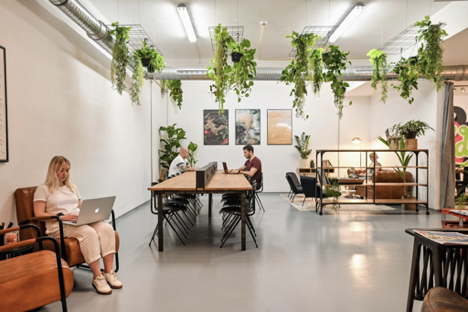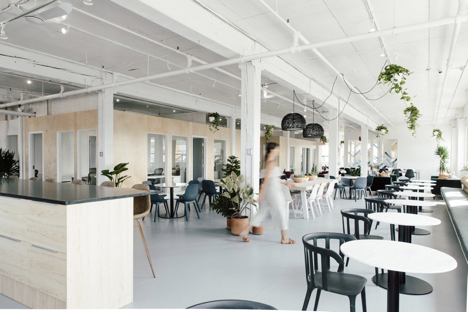Looking for ways to enhance your co-working experience? Discover the transformative power of designing spaces for mental health. In this guide, we will explore the importance of prioritizing mental well-being in co-working environments. Gone are the days of sterile and uninspiring offices. Instead, imagine a calm and stress-free space that promotes social connections and collaboration. By incorporating elements of nature and biophilic design, you can create an environment that fosters creativity and productivity.
Additionally, we will delve into the significance of privacy and personal space, as well as the role of ergonomic design in supporting physical well-being. Get ready to revolutionize your co-working space and prioritize your mental health like never before. Let’s dive in!
The Importance of Mental Health in Co-Working Spaces
When working in a co-working space, it is essential that you prioritize your mental health. The bustling environment of a co-working space can be both exciting and overwhelming, making it crucial to take care of your well-being. To maintain a healthy mindset, it is important to establish boundaries and set realistic expectations for yourself.
This means recognizing when you need breaks and allowing yourself time to recharge. It may be tempting to push through long hours and neglect self-care, but remember that your mental health directly impacts your productivity and overall success.
Take advantage of the various amenities that co-working spaces offer, such as relaxation areas, meditation rooms, or even outdoor spaces for a breath of fresh air. Engaging in regular physical activity can also contribute to your mental well-being, so consider taking breaks to stretch or go for a walk.
Additionally, connecting with fellow co-workers can provide a support system and promote a sense of belonging. By prioritizing your mental health in a co-working space, you can ensure that you are thriving personally and professionally.

Creating a Calming and Stress-Free Environment
To create a calming and stress-free environment in your co-working space, prioritize the inclusion of natural elements and comfortable furnishings. By incorporating these elements, you can create a space that promotes relaxation and well-being among your members. Here are three key ways to achieve this:
- Bring nature indoors: Introduce plants, natural light, and views of the outdoors into your space. Research shows that exposure to nature can reduce stress levels and improve overall mental health. Consider adding potted plants, large windows, or even a green wall to create a soothing and refreshing atmosphere.
- Choose comfortable furnishings: Opt for ergonomic chairs and adjustable desks that prioritize comfort and support. Uncomfortable seating and poor posture can lead to physical discomfort and increased stress levels. Providing your members with comfortable and ergonomic furniture will not only enhance their well-being but also boost their productivity.
- Create quiet zones: Designate areas within your co-working space where individuals can retreat for moments of solitude and silence. These designated quiet zones can serve as sanctuaries for relaxation and reflection, allowing members to recharge and focus without distractions.
Promoting Social Connections and Collaboration
- Foster social connections and collaboration among your coworking members by creating communal spaces that encourage interaction and teamwork. When designing your co-working space, it’s important to consider the layout and furniture arrangement to promote social connections and collaboration. Start by incorporating common areas such as lounges, cafeterias, or outdoor spaces where people can gather and engage in casual conversations.
- These spaces should be designed with comfortable seating options and tables that facilitate group discussions and brainstorming sessions. Additionally, consider adding features like whiteboards or projectors to encourage collaboration and idea sharing.
To further promote social connections, consider organizing community events or workshops within the co-working space. These events can range from networking sessions to skill-sharing workshops, allowing members to connect with one another and learn from each other’s expertise.
You can also create online platforms or forums where members can communicate and collaborate virtually, fostering connections even when physical interactions are not possible.
Encourage members to interact by providing shared amenities such as kitchenettes or game rooms.
According to the Mindspace company, they are providing various new features in coworking williamsburg like informal meeting areas, where members can take breaks, grab a coffee, or engage in friendly competition, fostering a sense of community and camaraderie.

Incorporating Nature and Biophilic Design Elements
Create a welcoming and rejuvenating co-working space by incorporating natural elements and biophilic design elements throughout. Here are three ways to incorporate nature and biophilic design elements into your co-working space:
- Greenery: Incorporate plants and greenery into your co-working space to create a calming and inviting atmosphere. Plants not only add beauty to the space but also improve air quality and reduce stress levels. Consider adding plants of various sizes and types, such as hanging plants, potted plants, or even a living wall.
- Natural Light: Maximize the use of natural light in your co-working space by designing open spaces with large windows. Natural light has numerous benefits for mental health, such as boosting mood, increasing productivity, and regulating sleep patterns. Make sure to position workstations and communal areas near windows to allow ample sunlight to filter in.
- Nature-Inspired Materials: Incorporate nature-inspired materials like wood, stone, and natural fabrics into the design of your co-working space. These materials not only add warmth and texture but also create a connection to the natural world. Consider using wooden furniture, stone accents, or natural fiber rugs to bring a touch of nature indoors.
Designing for Privacy and Personal Space
Design for privacy and personal space by incorporating designated areas for individuals to focus and rejuvenate. In a co-working space, it is important to provide options for people to have moments of solitude and uninterrupted work. Creating private nooks or booths can offer individuals a sense of personal space where they can concentrate on their tasks without distractions.
These designated areas can be designed with soundproofing materials to minimize noise and provide a quiet environment. Comfortable seating and adjustable lighting can also enhance the experience, allowing individuals to customize their space to suit their needs.
Furthermore, it is crucial to design spaces that allow for relaxation and rejuvenation. Incorporating wellness rooms or meditation areas can provide individuals with an opportunity to take a break and recharge. These spaces can be designed with comfortable seating, soft lighting, and calming elements such as plants or artwork. It is important to create an atmosphere that promotes relaxation and encourages individuals to take care of their mental well-being.
Supporting Physical Wellbeing Through Ergonomic Design
To ensure your well-being as a co-worker, it is essential to prioritize ergonomic design. By incorporating adjustable furniture and equipment, you can support proper posture and reduce the risk of physical discomfort. Here are three key elements to consider:
- Ergonomic Chairs: Invest in chairs that provide adjustable features such as height, lumbar support, and armrests. This allows you to customize the chair to your body’s needs, promoting a healthy sitting position and reducing strain on your back and neck.
- Height-Adjustable Desks: Standing desks or desks with adjustable heights offer flexibility in your work environment. You can alternate between sitting and standing, promoting better blood circulation and reducing the negative effects of prolonged sitting.
- Ergonomic Accessories: Consider using ergonomic accessories such as keyboard trays, monitor stands, and wrist rests. These accessories help maintain proper alignment of your wrists, arms, and neck, minimizing the risk of repetitive strain injuries.










